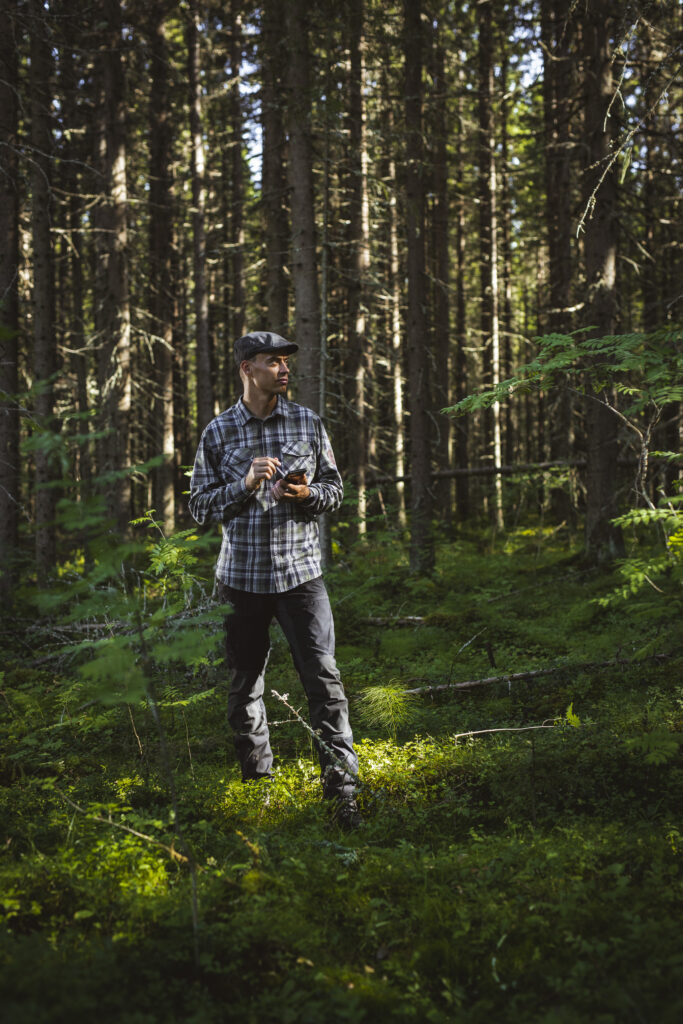The operating environment for forest owners has turned into a demanding playing field. External requirements are often imposed by non-forest owners. Forests are often perceived to be common property where decision-making should be open to being influenced. Multi-objective forestry and the acceptability of wood use could be promoted through gamification.
A major challenge for forest owners in recent times has been to adapt to climate change and improve biodiversity. Forest organisations and their staff members must be able to provide forest owners with services that comply with external and internal challenges as well as the changing needs of forest owners.
Gamification can be a solution for both learning and improving the acceptability of forest use. As a forest owners organisation, we want to be involved in promoting sustainable use of forests through gamification. From the very beginning of the UNITE flagship, we have been interested, open and active in the opportunities that gamification could offer.
Knowledge of changing needs and objectives important
The challenge of developing services for forest owners is the fact that the goals of forest owners change depending on time and place. Changes can be permanent or temporary, small or large, significant or insignificant. The forest owner survey looks at forest owners through their target groupings. Polls are always time-bound views of the current situation, but longer-term trends can also be seen. Surveys are conducted on a large scale, nationwide, for example every ten years.
General information is collected every six months in MTK. With hundreds of thousands of forest owners and thousands of operations to be carried out every day, the importance of real-time information as support for improving services and decision-making is growing. Information about the service needs and satisfaction of forest owners with services should be constantly up to date.
Gamification enhances digital services
In developing a culture of service for forest owners, digital tools are making leaps and bounds. The OmaMetsä service, available in Finnish and Swedish, has been launched and it allows forest owners to view their forest data as well as communicate directly with a forestry professional. It was developed for the Finnish Forest Management Associations (MHYP – part of MTK) by Bitcomp Oy. A large percentage of forest owners live some distance away from their holdings so having access to confidential management of their forest matters remotely, is very important.
In addition to connecting through digital services in relation to forestry matters, there has also been the development of a data bank on a variety of forest issues. Existing databanks already contain a lot of data, however, there is so much potential to pursue further opportunities. One such area of interest to us is the possibility of utilising gamification in digital services. Gamification may be applied, for example, in the management and summaries of invoices, payments and receipts, as well as in the analysis of measured and simulated forest farm data. Gamified interaction with photos, videos, spatial data sets of different species as well as recreational data can bring new understanding and support decision-making. New data sources may come from public information, or it might be collected and processed by your own organisation and staff member. Indeed, information may be collected and processed by forest owners themselves, or by other persons or organisations.

The purpose of the information collected and shared by an organisation, is to better serve forest owner customers. For the forest owner, the databank in the OmaMetsä service can open up the possibility of using self-collected or processed information that would help in forestry and nature management decisions. It is hoped that gamification will help with analysing information in an easy-to-use format, and that it might also include entertaining elements. In this case, collecting information could become a nice hobby that can engage and motivate the forest owner data collector. Perhaps they will move around more in their own forest and to become familiar with all the tools needed to implement sustainable forestry. Gamified forest information systems could be designed so that they increase interest in the planning and management of forests and nature.
Solutions needed for the challenges of sharing information
The collection and use of forest and nature information can be seen as either a threat or an opportunity. On the one hand, it could be seen to improve knowledge and further the acceptability of the economic use of forest by refining multi-objective forest planning and delivering precision forestry. On the other hand, though, collecting this data could risky and conflict prone, as new data could be used against a forest owner.
The problems of information sharing have been resolved in the Finnish Forest Centre’s (Metsäkeskus) public Metsään.fi service by giving forest owners the responsibility for sharing information. Forest owners can decide themselves whether their information may be shared with an organisation. The Metsään.fi service is currently being renewed and the updated service will be a comprehensive public service which can continue to be utilised in other forestry organisations’ own systems, such as OmaMetsä service, to improve services for forest owners.
Easier decision-making with gamification
In developing gamification, it would be important to identify the different needs of forest owners and staff members and other people and to build bridges for the acceptability of forest use by increasing knowledge and learning about sustainable forestry and the management of natural resources. Threats can also be seen as opportunities as the understanding of sustainable forest management increases.
It can sometimes be difficult to reconcile the different dimensions of sustainability, as it would require, for example, the development of ecological and carbon market compensation systems in the market and the refining of different sustainability metrics to meet practical decision-making needs. The sustainability of forest use should be considered in the context of overall sustainability, where all aspects of sustainability are considered in decision-making. In their decisions, the large heterogeneous group of forest owners can emphasize aspects of sustainability in different ways, according to their own objectives. It is hoped that gamification can help support forest owners’ decision-making in an area of personal asset management that can often feel complicated and demanding.
Kalle Karttunen, Research Manager at MTK, the Central Union of Agricultural Producers and Forest Owners
